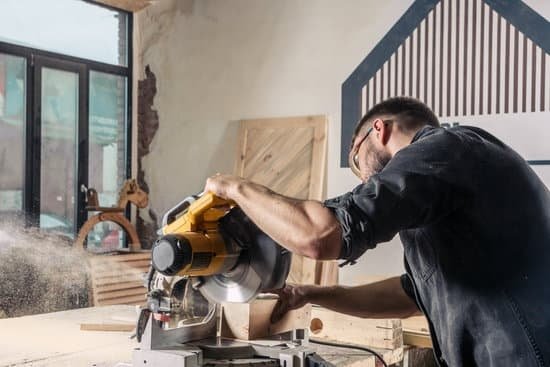Introduction
Before setting up a basement woodworking shop, one must consider the type of tools and materials needed for the project. Space, lighting, access to electrical power, dust collection system, and safety equipment are all important factors that need to be addressed before moving ahead with the project. Additionally, it’s important for homeowners to become familiar with the local laws and regulations put in place regarding workshop construction.
Tools: Before beginning a woodworking shop in your basement, you’ll need to purchase a selection of high-quality woodworking tools. These may include saws like circular saws, miter saws, table saws and jigsaws, as well as drills and other power tools like routers. Hand tools such as chisels, hammers, clamps and screwdrivers should also be considered. Furthermore, depending on what kind of woodworking projects you plan on taking on in your shop”making furniture or creating complex constructions like doors or staircases”you may also want to invest in specialty tools such as planes and doweling jigs.
Materials: Next comes finding the right materials for the job at hand. Depending on what kinds of projects you plan to create in your basement workshop will dictate what types of woods you will want to work with; softwoods that are good for making smaller objects or hardwoods that will better support larger projects such as furniture or external house-building elements like porches or staircases. You’ll also need an array of glues, sandpaper around different grain sizes (coarse/medium/fine) and finishes that can both protect your pieces from moisture damage and give them a beautiful finish (e.g., shellac).
Lighting & Electrical Supply: Lighting is especially important within a basement workshop because it can create shadowing which can make it difficult to work accurately. Installing well-lit fluorescent lights at multiple points throughout the room will help illuminate several areas at once while also saving energy costs compared to traditional lamps or spotlights. Additionally when considering lighting sources have power supplies placed so they don’t affect dust collection systems directly below them”that dust has to go somewhere! To provide electricity in your shop safely use a 20-amp circuit breaker from outside that is wired into an isolated part of your home’s electrical grid (an isolated circuit for shared houses) as this provides safety features not offered by extension cords or double adaptors running off existing circuits elsewhere in home.
Dust Collection System & Safety Equipment: Last but not least are considerations around dust collection system & safety equipment options available today designed specifically for working with wood in basements; systems here range from small portable models linked through duct pipes which operate similarly vacuum cleaner or large static machines designed permanently fix close working area while providing efficient capture fine particles rising during sanding processes among others activities done within workspace environment generally speaking any system needs either outlet outdoor leading releasing contaminants outdoors away home breathing zones alternatively heating system centralised filter cabin capturing any airborne debris produced during activities ongoing within space itself some units very heavy require special fixing tubes connect wall etc As far as safety items go” these included appropriate hearing protection gear face masks safety eyewear respirators work gloves scarves bandanas order reduce levels contact skin particles air going beyond pure systems should think fitting walls ceiling panels order improve ventilation capture small airborne bugs insects
Design Considerations
When it comes to designing a woodworking shop in a basement, there are several key design considerations that should be taken into account. Firstly, the shape of the basement will determine the layout of the workspace and dictate what type of tools and machines can be used as well as where they should be placed. It’s also important to keep ventilation and dust control in mind so that sawdust and other particles do not accumulate and cause harm to your respiratory system or furniture. To provide additional space for storing materials, you may want to consider investing in adjustable storage shelving. Additionally, using wall-mounted hanging bars allows you to keep raw material off the floor while still providing easy access when necessary. When it comes to lighting, recessed ceiling lights are necessary but task lighting placed strategically around work areas is also very helpful for creating better visibility while working. Finally, quality soundproofing will help minimize noise transmission while also making it easier to focus on the task at hand without being distracted by external factors. Taking all of these components into account will ensure that your basement woodworking shop provides both an aesthetically pleasing experience and an optimal environment for completing projects efficiently and safely.
Tool List
When setting up a home workshop, there are certain tools that are essential to have in order to tackle woodworking projects. To ensure success and proper execution of your projects, invest in the following tools:
1. Table Saw: A table saw is ideal for processing large pieces of lumber and creating strong joint connections.
2. Jointer/Planer: Also known as a jointer/planer, this combination tool can be used to flatten and reduce thickness of wide boards.
3. Router: Routers are essential for cutting shapes, edges and grooves into wood for decorative touches or for specialized joinery methods such as dovetailing .
4. Sander: Sanders provide an efficient way to make wooden surfaces smoother before staining or finishing them.
5. Drill Press: It’s important to drill holes in the lumber accurately and quickly; A drill press can ensure that all drilled holes will align perfectly with each other without any unevenness present on the surface of the board.
6. Clamps: Clamps are invaluable when it comes to joining two pieces of wood together securely; Installing clamps before you begin drilling screws or nails into a joint will help avoid unnecessary jagged edges or misalignments when securing the two pieces together .
7. Hand Tools: Invest in quality hand tools such as hammers, saws, screwdrivers and chisels – these tools maintain precision when carrying out detailed tasks like carving intricate shapes into wood .
Space Optimization
When planning a basement woodworking shop, it’s important to make the most of what you have. To optimize your space, consider the following ideas:
1. Take inventory of the existing furniture and remove all non-essential items such as couches, beds, and tables. This will free up valuable floor space that can then be used for storage, seating areas, and creating your ideal workspace.
2. Measure the available wall area and use it to strategically hang tools like drills or saws as well as bins for organizing smaller items like screws, nails, or craft supplies. Get creative with this! There are a variety of hooks and shelves available to eliminate clutter in a relatively small area.
3. Consider installing movable workbenches on casters so you can easily move them around if you need additional floor space for larger projects. If you plan on using the bench regularly, make sure it’s securely anchored so it won’t shift when in use.
4. Put loud machines and tools at least four feet away from each other so noise won’t interfere with one another while working on simultaneous projects.
5. Make good use of your ceiling height by adding storage options such as wall cabinets or hanging racks that won’t impede your work down below yet provide ample extra space above head level.
Utilizing Color and Decorative Elements to Enhance Your Basement Shop
One of the more creative ways to enhance your basement woodworking shop is using color and decorative elements. For example, you can use paint to add an interesting focal point to an otherwise blank wall, or incorporate accent wallpaper to bring a sense of personality. Additionally, adding decorative items like carpets, rugs, art pieces and plants can add texture and color while bringing warmth to the area. Having complimentary color schemes in the walls will make any tool or material stand out. In addition, strategic lighting can really make the right parts of your shop come alive with a warm glow. Finally, adding a small seating area for easy relaxation and project planning can bring balance and comfort to your woodworking space.
Safe Electrical Setup
When setting up a basement woodworking shop, it is important to make sure that the electrical setup and wiring are up to code and reliable. This means that the wiring should be in good condition, outlets should be appropriate for the tools you will use, and be grounded properly. It is important to consider the amperage draw of each tool when setting up your shop to make sure you are not overloading circuits or causing shorts. It is also essential to install GFCI outlets near any area where moisture may occur such as near sinks or basements where floods can occur so there is less risk of electrocution if water comes into contact with an exposed wire. Safety switches should be installed on tools such as table saws, as these can prevent injury if an object is kicked or rolled onto them. Finally, ensure that each circuit in your woodworking shop has proper labeling and all excess wires stored away from work areas. This can eliminate tripping hazards and potential fire hazards caused by overloaded circuits.
Creating Separate Zones for Different Types of Projects
When designing your basement woodworking shop, it’s a good idea to create separate zones for each type of project. This could include having designated spaces for specific tasks such as cutting, sanding, gluing and finishing. It is also important to install shelves that provide easy access to tools and supplies for the different types of projects requiring them. By having dedicated zones with the necessary materials and tools at hand, projects can be completed more quickly and efficiently with fewer interruptions.
Furthermore, consider investing in an overhead light or two that will reduce shadowing over your projects, allowing you to see details better while working. Additionally, providing adequate ventilation is essential in order to avoid condensation and static buildup from sawdust which can interfere with the electronics being used in the shop. Ventilation fans should be placed so that the air flows away from the direction of where your project will be located. Having distinct zones within your shop allows you to stay organized while completing multiple types of woodworking projects at once.
Investing in Quality Equipment for Smooth Finishing and Sawing
When it comes to establishing a basement woodworking shop, investing in quality equipment is essential for ensuring successful woodworking projects. Quality equipment allows for smoother sawing and finishing of materials, as well as providing efficient use of time and materials. Look for table saws, band saws and jointers that provide exact cutting performance with minimal vibration. An edge sander is also an essential part of the shop and should have an adjustable speed control to eliminate burning and snagging on the edges of material. A good thickness planer will help produce super-smooth surfaces on finished pieces. A drum sander is another useful tool for planes larger stock pieces efficiently. As for hand tools, invest in several chisels and a set of carving tools to help shape and smooth wooden surfaces. Finally, look into dust collection systems to ensure your shop stays free from mess and dirt. These are just some basics when creating a basement woodworking shop ” the options are endless!
Planning for Potential Expansion in the Future
When planning for a basement woodworking shop, it is important to consider potential future expansion. Think of how you can expand the woodworking shop down the line with materials and tools that you may acquire. If your space is limited, utilize multi-functional tools and storage containers to maximize storage while avoiding clutter. Consider investing in power tools that are more expensive upfront but more efficient in the long run, as they will save time and effort when working on projects. It is also important to think about additional power outlets as well as dust collecting systems or ventilation systems to ensure your workspace remains safe and hazard free. Building shelves above and below your workbench can provide additional storage areas for both materials and larger equipment such as joiners or planers. Lastly, make sure to leave room in the budget for miscellaneous expenses like hoses, cords, bits, blades and various other items that may become necessities later on in projects.
Summary
Transforming your basement from a storage area into an amazing woodworking shop can be both cost-effective and rewarding. First off, clear out your basement space to make room for your new workshop. Consider installing a dust collection system to keep the air in your shop clean and free of airborne particles. Invest in some quality tools and power equipment, as well as some benches and tables. Also, consider adding shelves, drawers, and peg boards to store all of your tools. Finally, set aside an area where you can safety sand pieces of wood before assembling them together. With these tips in mind, you’ll have an organized space that helps you complete any projects you have in mind with ease!

Hi everyone! I’m a woodworker and blogger, and this is my woodworking blog. In my blog, I share tips and tricks for woodworkers of all skill levels, as well as project ideas that you can try yourself.





